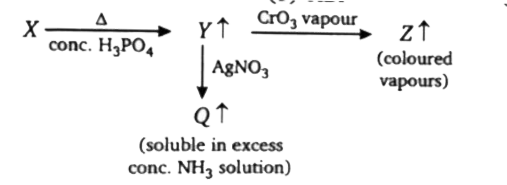Which of the following cannot be detected in a developing foetus by amniocentesis?
Down syndrome
Jaundice
Klinefelter syndrome
Sex of the foetus
The correct Answer is:B
Step-by-Step Solution:
1. Understanding Amniocentesis: Amniocentesis is a medical procedure used during pregnancy to extract amniotic fluid from the amniotic sac surrounding a developing fetus. This procedure is typically performed between the 14th and 16th weeks of pregnancy.
2. Components of Amniotic Fluid: The amniotic fluid contains fetal cells, which can be analyzed for various genetic and chromosomal conditions. The cells obtained can provide information about the fetus's genetic makeup.
3. Conditions Detected by Amniocentesis:
- Down Syndrome: This is a chromosomal disorder caused by an extra copy of chromosome 21. It can be detected through chromosomal analysis of the fetal cells obtained from the amniotic fluid.
- Klinefelter Syndrome: This is another chromosomal disorder that occurs in males when they have an extra X chromosome (XXY). Like Down syndrome, it can also be detected through amniocentesis.
- Sex of the Fetus: Amniocentesis can also be used to determine the sex of the fetus by analyzing the chromosomes present in the fetal cells.
4. Condition Not Detected by Amniocentesis:
- Jaundice: Jaundice is not a chromosomal disorder; rather, it is a metabolic condition characterized by yellowing of the skin and eyes due to high bilirubin levels. It is not detectable through amniocentesis because it does not involve chromosomal analysis.
5. Conclusion: Based on the information above, the correct answer to the question "Which of the following cannot be detected in a developing fetus by amniocentesis?" is jaundice.
Final Answer: Jaundice (Option 2)
---
- Down Syndrome: This is a chromosomal disorder caused by an extra copy of chromosome 21. It can be detected through chromosomal analysis of the fetal cells obtained from the amniotic fluid.
- Klinefelter Syndrome: This is another chromosomal disorder that occurs in males when they have an extra X chromosome (XXY). Like Down syndrome, it can also be detected through amniocentesis.
- Sex of the Fetus: Amniocentesis can also be used to determine the sex of the fetus by analyzing the chromosomes present in the fetal cells.
- Jaundice: Jaundice is not a chromosomal disorder; rather, it is a metabolic condition characterized by yellowing of the skin and eyes due to high bilirubin levels. It is not detectable through amniocentesis because it does not involve chromosomal analysis.
Topper's Solved these Questions
Similar Questions
Knowledge Check
Which of the following cannot be detected in a developing foetus by amnicentesis ?
AJaundiceBDown's syndromeCCystic fibrosisDColourblindnessWhich of the following cannot act as inducer ?
AGlucoseBLactoseCGalactoseDBoth (a) and (c)
Which of the following cannot he formed ?
View SolutionWhich of the following cannot be hydrolysed?
View SolutionWhich of the following cannot be hydrolysed ?
View SolutionWhich of the following cannot be polarised?
View Solution
Which of the following anion cannot be in X?
View Solution
Which of the following anion cannot be in X?
View Solution
